Issy Alps 100, Third Time’s a Charm: Thoughts on Fear, Fun (Type II) and Faith
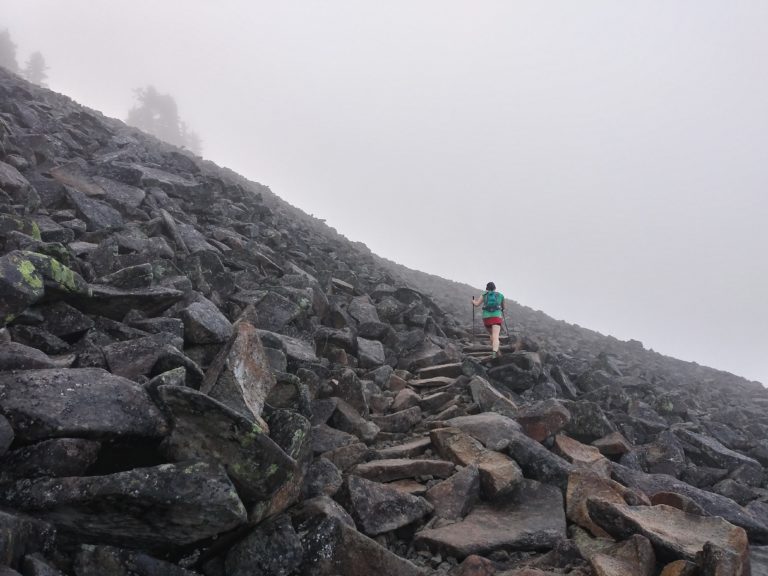
Six years ago, when George asked me to help him scout out some connections between our local mountains, I don’t think he had any idea of the monster he was creating. I won’t go into the full history of the Issy Alps 100 route (you can find that here), nor my own personal history with it (story of my first DNF here; shorter post on my second DNF here)—but suffice to say that in six years, the route had 15 finishers (8 supported; 4 unsupported, in pairs; 3 unsupported solo)—and despite multiple attempts individually, neither George nor I was among them.
To celebrate his birthday last week, I took Monday and Tuesday off from work so we could try to finally knock that Issy sucker off together. We originally planned to attempt our unsupported run on Sunday-Monday, but the weather forecast called for rain all day Sunday, so we decided to shift back by a day to take advantage of a drier weather window.
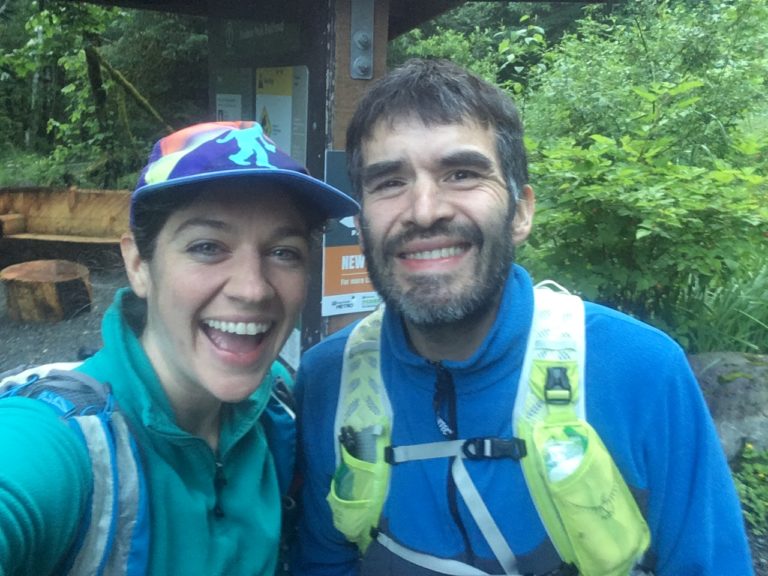
At the Mailbox trailhead at 6:21 a.m. on Monday, we turned on our SPOT and started hiking under a cool, cloudy sky. Once on the old trail, we ran into three fellow ultrarunners (including fellow Plain enthusiast Jenni Schwegler) who were in the middle of an “Issy Hard 100K” attempt they’d started some 13-14 hours earlier. We chatted a bit before wishing each other well and continuing on—us on up the trail, them on down.
When we finally broke above tree line, we made bets on whether the sun would come out for us at the summit or not. It was trying hard to poke through the rapidly moving layers of clouds. Just as we began the final summit push, a figure appeared above us, haloed in the hazy morning light.
“George and Yitka!” a voice called out. The figure was totally silhouetted, so we couldn’t immediately make out who it was.
“Is this the way to heaven?” George called out jokingly. The figure turned out to be Mark Cliggett, a fellow finisher of Plain last year, as well as of the Issy Alps 100, who was out doing morning repeats on Mailbox and on his way down from lap one. He wished us good luck on our long journey ahead.
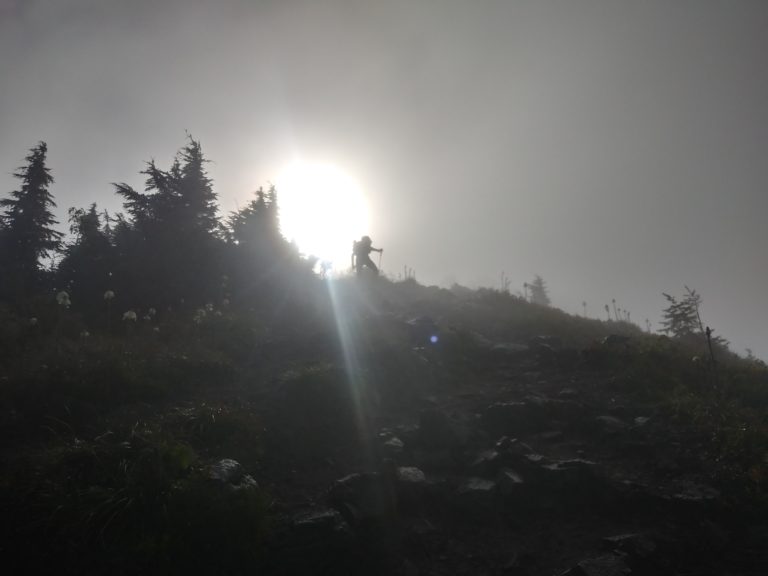
At the summit, a stranger named Austin kindly offered to take a photo of us before we headed back down the mountain.

*
The last few months in our lives have been stressful—due in part to us trying (and failing) to buy a house, an exhausting experience that didn’t just empty our emotional tanks; it bulldozed the whole damn gas station. I think we both went in to our Issy Alps attempt ravenous for the simplicity that a long run promises—nothing to do except put one foot in front of the other, again and again and again.
There’s a reason, after all, that people are romanced by pursuits like thru-hiking or mountaineering or ultrarunning; endurance is such a pure form of living, a way to experience being human, but stripped of the superfluities and stressors of modern life.
But for George and me, even our wildest adventures are usually wedged precariously close to our modern-life responsibilities: work, parenting, financial obligations, etc. Not too long into our Issy journey, it seemed unlikely that we’d finish within the 35-36 hours that we’d hoped and planned for. Though I was thoroughly enjoying our mellow pace—complete with leisurely snack breaks and trailside chats with passersby—I began to stress about the possibility of a longer sojourn in the woods.
Anxieties flooded me, as they’re wont to do: What if I don’t get enough sleep before my workday on Wednesday? What if it takes us so long that we aren’t done by the time George needs to pick his kids up on Wednesday? What if we didn’t pack enough calories to sustain us all those hours? What if we don’t have enough batteries to power our headlamps through two nights instead of one? What if it’s just too hard to keep moving that long?
I make for terrible company when I’m stressed out. I did my best to keep my tiresome anxieties to myself, but alas, I’m no subtle Susan. What gave me away? Probably when George would periodically say something like, “We’re making great time!” and I’d reply with silence.
Anxiety is my oldest frenemy, and I’ve been working hard in recent years to put some reins on that wild horse. To assuage my time anxieties on the trail, I did my best to play therapist/motivational speaker to myself.
I thought of the handsome man padding along by my side, who once told me that the sleep deprivation of working two full-time jobs was good training for ultras. He’s spent years averaging 2-5 hours of sleep per night during his workweeks. That’s neither healthy nor an ideal to strive for, but reflecting on how he copes with that kind of sleep deprivation every week flushed out all my self-pity and hand-wringing over whether Wednesday might be a little rough for me at work. It probably would be. But so what?
As for the food: I thought of when I was 20 and spent a week in Turkey during Ramadan, and a young woman my age said she embraced having to fast for a month. She explained how this helped her feel empathy for and solidarity with all the people in the world who can’t afford to feed themselves or their families. How big a deal is it really to not get enough calories for a few hours, when other people don’t ever get enough?
*
The more hours we ran, the quieter my mind became. (I used to say, “Running is my meditation”—until I read Sakyong Mipham’s book on the subject, which clearly explained the difference: Meditation teaches you how to tame the wild horse, whereas running merely wears it out for a bit.) All the stresses faded into a serene haze.
The Granite Creek Connector after Mailbox was brushy and somewhat slow going. But when we got to the Sitka Spruce Trail, we were grateful to discover that someone had done a lot of work there; the trail was clear and fresh trimmings lay all over it.
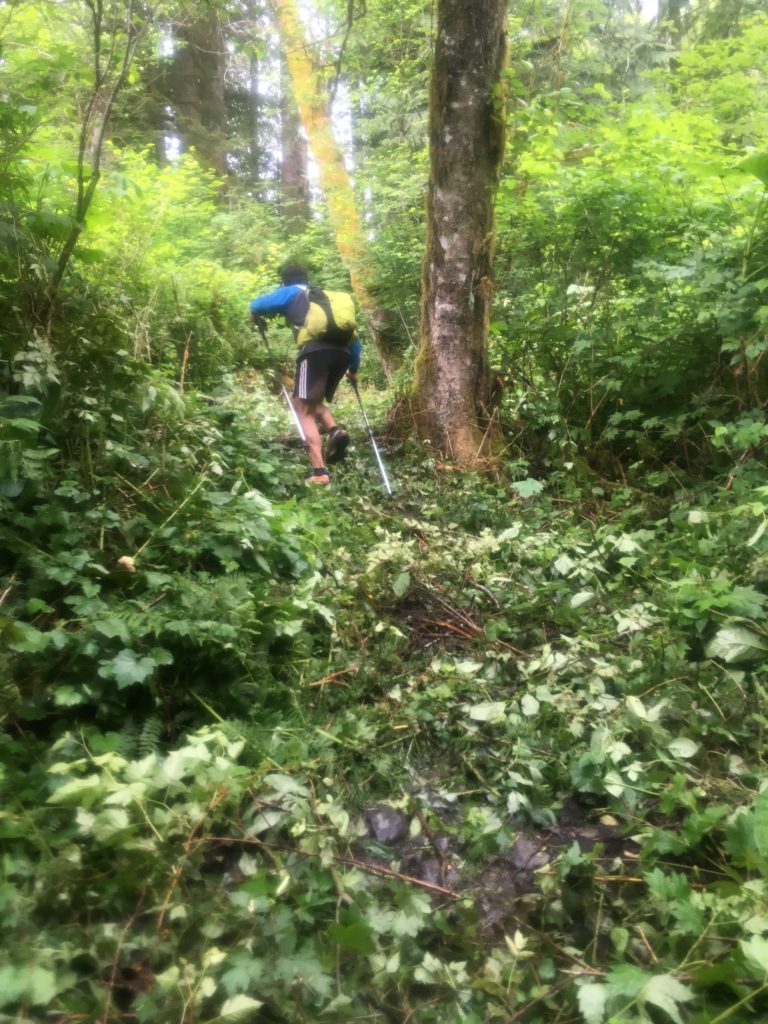
We pulled on pants and jackets for a short stretch to protect our skin from nettles, but for the most part, we emerged on the CCC road unscathed, and with dry feet to boot. Toward the bottom of the road, we ran into a woman walking up the trail with six or seven huge dogs. They all went obediently to the side of the trail as we passed, but then started barking at us like crazy. The only not-huge dog with her was terrified of the whole situation and hauled ass down the trail by itself, leading to some delay as we tried to help the woman round up all her critters.
Mount Teneriffe was a challenging climb, as she always is, but we were rewarded with an empty summit and clearer views than we’d gotten atop Mailbox.
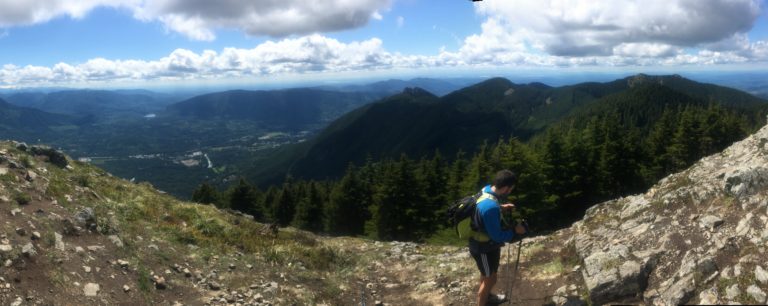
Mount Si, Little Si and the Snoqualmie Valley Trail passed by rather uneventfully. We had fun. We got into wonderful, long-winded conversations about life and love and hope and our individual relationships with running. We talked about the mental strategies we use to get ourselves through tough spots. We joked around and made up silly scenes as we ran. Sometimes we made each other laugh so hard that we had to stop to catch our breath and regain our vision when it blurred with tears.
Night fell as we neared Rattlesnake Lake, so we turned on our headlamps on the hike up. Almost immediately, I grew shaky with fear. The recent cougar attack several miles north of there was fresh in my mind, as was the fact that we’d soon be approaching the various spots on the course that I’d previously encountered animals (always at night). The fear didn’t kick in until we’d turned our headlamps on, and I suddenly had visceral imaginings of catching beady yellow eyes in the beam of my light.
I had flashbacks to the misery I felt last year after catching a set of eyes in my headlamp for the third time within a span of a few hours. At that time, I’d called Glenn in a panic and asked him to pick me up, no longer able to handle being alone in the woods. (In retrospect, unlike two years ago when I saw the entire body of the mountain lion from around 15 feet away, I acknowledge it’s possible some or all of those sets of eyeballs last year belonged to deer. Several months ago, on a solo pre-dawn run up Mailbox, I caught a set of yellow eyes and perked ears in my headlamp, and I just about had a heart attack—but then the animal turned sideways and I saw that it was only a deer. Seeing that made me more aware of how easy it is to mistake the eyes and face of a deer for that of a cougar when you catch its face straight-on in your headlamp from farther away.) Anyway, all this to say that I was very grateful this year to be running with George instead of alone. My days of overnight, solo trail running may be over; my fears just make it too unpleasant.
The top of Rattlesnake Ridge got logged pretty heavily a couple years ago, so part of the course was wiped out for a while. But a trail is once again in place up there, so the route was easier to follow than the last two years I ran this section. There was plenty of water on course for all but the Rattlesnake traverse and later on Cougar, letting us carry less water at a time and filter more frequently with our new MSR TrailShot filter. (I saw someone use one at Plain last year, and much as I love my Sawyer Squeeze, I was filled with water-filter jealousy.)
We got so sleepy through the night that we pulled out our emergency blankets and took a 15-minute nap in the middle of the trail. It felt cozy and we both slept hard, though I woke up shivering violently from the cold. The nap succeeded in rejuvenating us, and we picked up the pace for a good stretch to come.
Coming down off Rattlesnake under the power lines was an adventure, as it always is. We missed turns several times, always being tipped off to our mistakes by the sound of traffic on I-90, meaning we were descending the wrong way. Backtracking uphill and trying to find the right trails probably cost us some 20-30 minutes here. (I’d made all the exact same mistakes last year, too, though I’d also been on the phone with Glenn the whole time, frantically singing and yelling, paranoid that a cougar was stalking me.)
As we finally made it down to Raging River, then started climbing back on the Tiger side of Highway 18, I reflected on what an altogether miserable course Issy is.
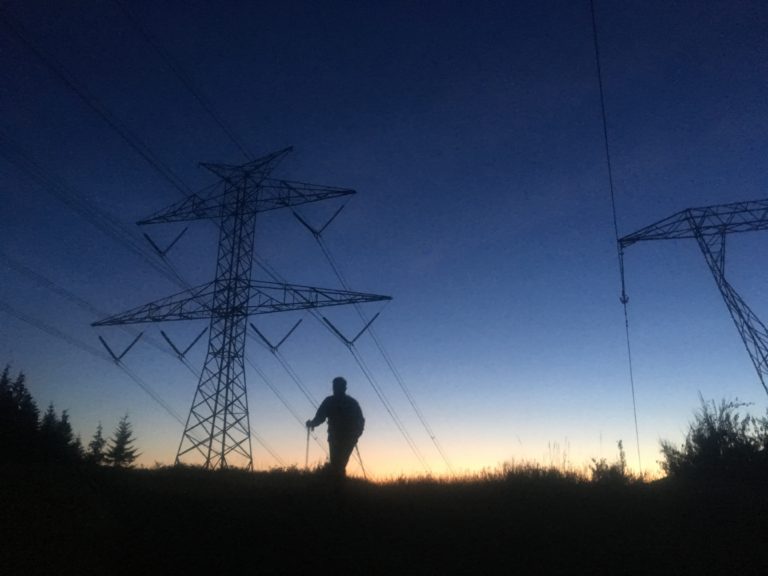
Don’t get me wrong—I love it dearly, too, and I think George is a genius for creating it. But so much of it is just painfully slow, slow going … relentless ups and downs, so soul-crushingly steep at times that your knees begin to feel like they’ve been clubbed over with a nightstick. Many sections (this year more than ever) are overgrown with stinging nettles and devil’s club that gashes your skin. There are nasty, rock-strewn service roads that feel like trying to run on marbles. The fact that Rattlesnake and Tiger are working forests means new parts of them get logged every year, turning bits of the course into unexpected bushwhacks and navigational jigsaw puzzles. There are icy cold rivers and creeks to wade through that leave your feet raw and macerated.
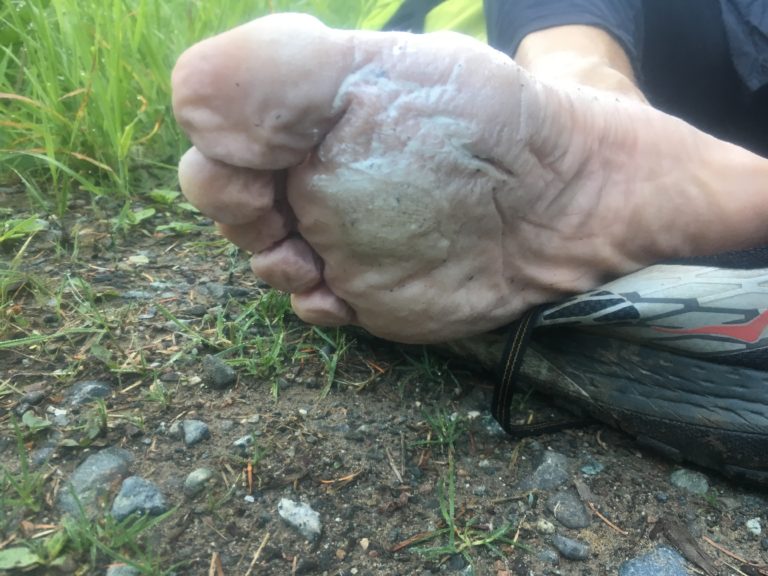
At some point, I remarked that I couldn’t believe Van had finished this thing five times. George said, “Yeah, that woman’s not normal. I mean, we’re not normal either. But she’s really not normal.”
The sleep monsters that emerge during all those long, slow hours can be especially vicious. We took another 15-minute nap right before sunrise, but both agreed when we woke up that it didn’t quite rejuvenate us in the same way as the first one had.
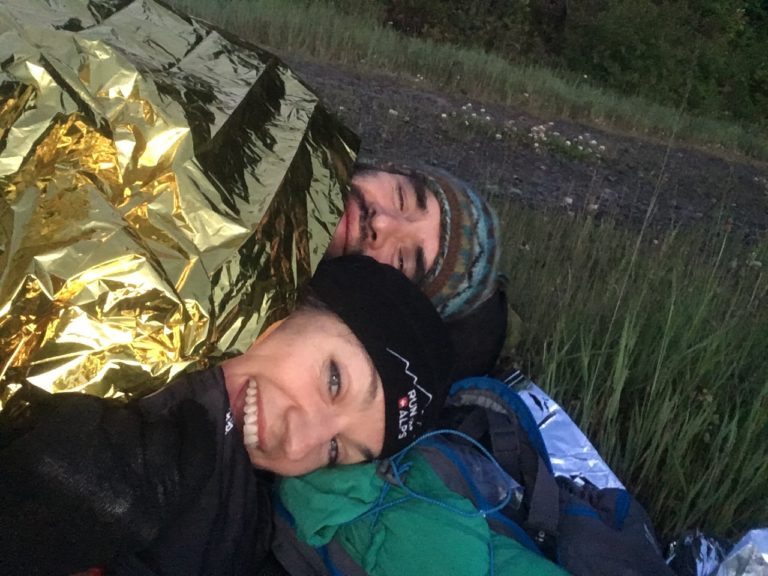
Sleepiness can make you goofy, too. We were happy when the sun came up and we made it up the slog to the top of East Tiger:
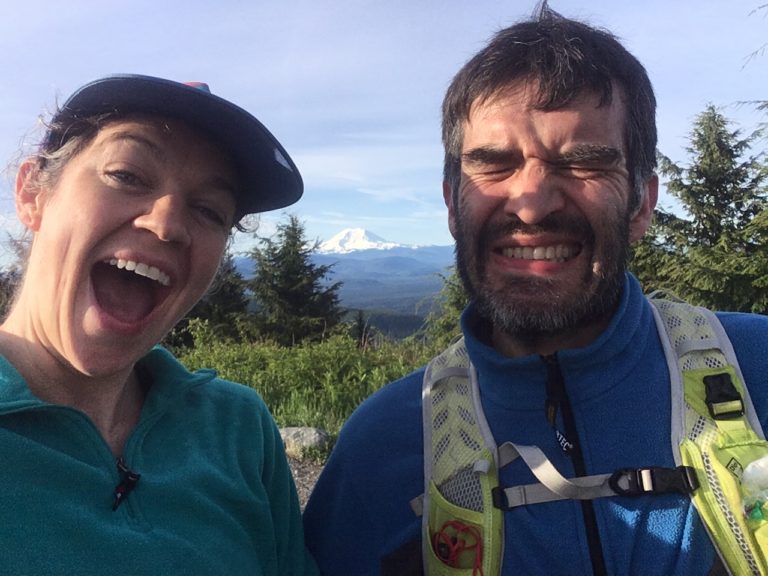
Still, Tiger Mountain is arguably the worst part of Issy, because you always think you’re going to get done with it sooner than you do; in fact, it lasts F-O-R-E-V-E-R. Though many trail junctions (on the whole route, not just Tiger) are far better marked now than they were two years ago, there are still plenty of unmarked intersections and confusing twists and turns to navigate. As Steve and Gina Slaby encountered last month (and, for them, in the dark), a whole swath of the route was recently obliterated by logging. They lost a full hour and a half here trying to find their way through the mess. We were saved from a similar fate by our GPS (Avenza Maps app on our phone with preloaded maps of the route), plus we knew that some folks from NW Hikers had tied up a couple blue ribbons to mark the way.

It was slow picking our way over all the logging detritus, but we were grateful to be doing so in daylight and had no trouble finding the trail again on the other side of the clear-cut.

We made it to the 100K mark in about 27 hours, and spent nearly half an hour there resting and refueling.
Moving along in good spirits, we made relatively quick work of the three West Tiger summits. Then we reached an intersection we thought we knew and bombed down a steep trail for half a mile or more, only to discover we’d turned off our ridge too early and were now off-course. We hiked back up the steep trail in weary, somber spirits, acknowledging that we’d just lost another 30-40 minutes. George was pretty upset—partially at himself for not knowing his own course better, perhaps partially at me (since I was the one with maps on my phone) for not having checked the map at the intersection. Sleep deprivation was obviously setting in; we agreed to be more vigilant at intersections.
We carefully navigated a few more, then found ourselves on a trail that was getting fainter and fainter, more and more swallowed by nettles that clawed at our skin. George remarked on how sad it was that all these trails had gotten so overgrown. And that he was surprised Steve and Gina hadn’t written in their race report about this particular one, since it was becoming almost impassable. I mumbled something about how fast plants grow this time of year. Then George said, “Wait, are we still on the right trail?” I pulled out my phone again to check, and I felt my heart sink. We’d managed to get off course again. (We’d both looked at the map on my phone at the intersection, but still chose the wrong path away from it.)
As we turned around to double back through the alley of nettles hell for a mile or so, George concluded that our Issy attempt was over. That we’d given it a good go, but all these wrong turns were just too much. He was over it. We should have prepared better by pre-running more of the course (neither of us had been on this part of Tiger in at least two years), and it was too bad it had to end this way, but that was that.
I let him speak for a while, but after he’d fallen quiet again, I said something to the effect of, “I know it’s shitty, but welcome to your Frankenstein. Getting lost and trying not to lose your will to finish is what Issy is all about. No one has made it through this course without some wrong turns. We’ve lost maybe an hour and a half or two, tops, so far. The first time I tried this, I lost five hours to wrong turns. And when I called you then to tell you I was giving up, you gave me the pep talk I needed to persevere. If we quit now, I know we’ll both forget how miserable this thing is and then want to try to do it again next year to get the monkey off our back—and I don’t know about you, but I never want to do this ever again.”
We had some silent, contemplative miles after that. There was no more talk of quitting. We made it over to Squak. On the heels of everything preceding it, Squak felt (to me) like a benevolent anthill that passed in the blink of an eye. George might disagree: he was sleepy and overheating on the climb up. But running down toward Cougar, we finally started smelling the barn, even though we still had some 6-7 hours to go. George led and set what felt like a blistering pace all over Cougar. Our spirits lifted as the miles flew by on relatively smooth trails. It felt so nice to run. (Well, minus our hamburger feet.)
We chatted casually and laughed again, joking around about mild hallucinations we were having, and fantasizing about what we’d eat when we were done. I started experiencing weird, out-of-body sensations running down the Wilderness Cliffs Trail. They were kind of fun—a nice distraction from all the pain in my body, most of all in my swollen, blistered feet.
As we crossed back over the road to Squak, we knew we were going to get this thing done. George asked if I’d ever heard of “Milli Vanilli.” (His slur-game can be pretty strong at the end of ultras, so I heard “Willy Nilly.”) As usual, my pop-culture knowledge failed to pass muster, so he pulled out his phone, played this on YouTube and we ran into the darkening night on Squak, jamming out to “Girl, you know it’s true …”
I couldn’t wait to get to Tiger and finally knock out the last few miles that had previously eluded me. We crossed the streets of Issaquah, ran by the high school and got on the home stretch. I’d like to say we were joyful and celebratory here, but the reality is we were just plum exhausted. At 11:16 p.m., when we reached the deserted lower Highpoint trailhead, we looked and felt like we’d been hit by a bus.
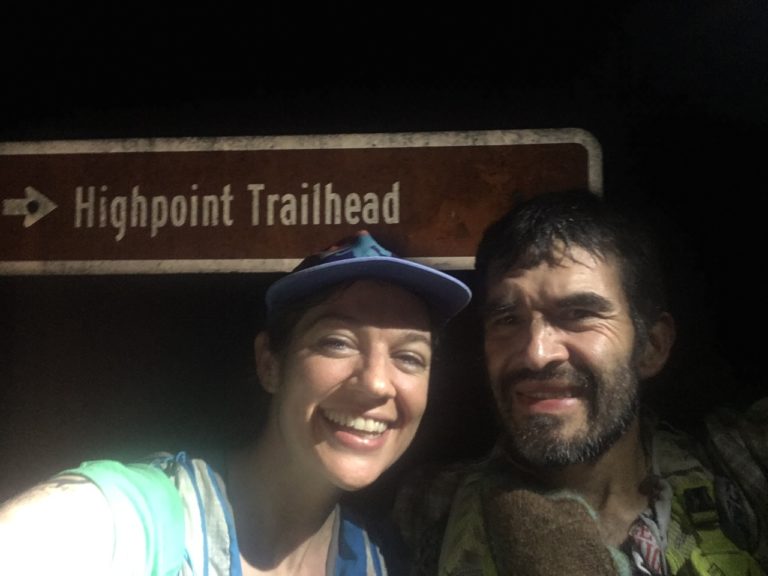
*
Running an ultra almost always wakes up my inner existentialist. (She naps contentedly most of the time, but daaang do those mountains know how to throw some water on her face and make her come hollering and crashing out of her cave.) This experience was no exception.
At some point during our run, George and I spent a fair amount of time discussing religion and spirituality. George was raised Catholic and retains a strong belief in God. By contrast, I guess I’d describe myself as agnostic, with nature being the closest thing to a church that I feel comfortable in.
As a child, though, I was deeply spiritual. At about 8 or so, I went through a long phase in which I secretly prayed in my closet and wrote in my journal about feeling I had a special connection with God. But I also felt rejected by religion as an institution, often being told by bible-thumping classmates in Kansas that I was going to go to hell because my family didn’t attend church regularly. So that turned me off from organized religion for a long time. In my adult life, I’ve mostly clung to the “I don’t believe in anything that can’t be proven” sentiment.
But several years ago, I read Paul Kalanithi’s book, When Breath Becomes Air—and I have to admit, that book was an earthquake to my belief system. At some point, while George and I were running on cruise control, I found myself rambling on about that book and how it shined a light on the fallacies of my own beliefs. Kalanithi pointed out that people, even agnostics or atheists, believe in all sorts of concepts that can’t be tangibly contained or “proven”—love, meaning, hope, to give a few examples.
Kalanithi wrote, “If you believe that science provides no basis for God, then you are almost obligated to conclude that science provides no basis for meaning and, therefore, life itself doesn’t have any.”
In ultrarunning, as with life, a belief in meaning is paramount to carrying on. In a similar vein, what good is a relationship without a belief in love, scientific proof of love’s existence be damned? What good is life without a belief in hope, and in our obligation to do good (however small) in this world?
Faith can take many forms.
The reality is that life isn’t always running on smooth trails and rocking out to Milli Vanilli. Sometimes it’s making wrong turn after wrong turn after wrong turn on a horrible mountain that seems like it’ll never end. But I’ll say this: sticking out the journey through those dark, rock-strewn, nettle-walled corridors is an act of faith (even/especially if it takes three years, or more) that’s always worth it. And if there’s a force in this universe powerful enough to make our silly selves keep flocking back to challenges like this one for seemingly inexplicable reasons, I’m not arguing with its existence.
I’ll conclude this in the same way I did my article for Trail Runner about this route:
“There is a peculiar joy to planning and putting together an expedition, even the smallest, most quixotic one,” wrote [Rob] Schultheis. “It is a child’s idea of what adult life is supposed to be like, really … It is how we should live all the time—full of naiveté, innocence, a sense of profound, playful importance—and almost never do.”
And, with a faint smile, I thought, Thank you, George.
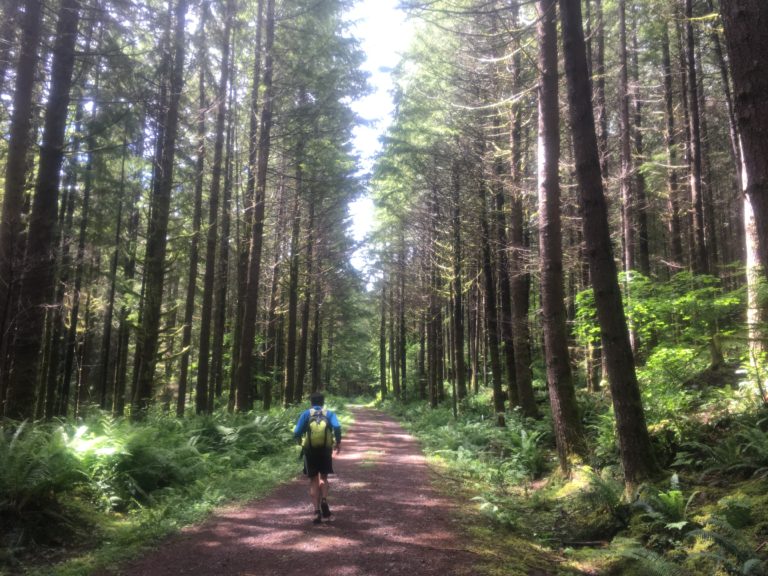
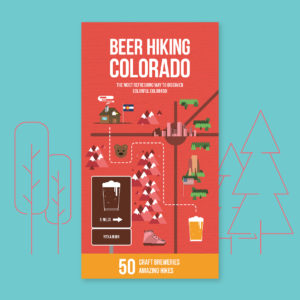
[…] rare to like everything that someone writes, but Yitka’s words are an exception. In this recent piece about her 3rd try at the Issy Alps, she reflects on the meaning of adventure, the big question of […]
Yitka! I am so happy you finished. If I would have known y’all were in my neck of the woods, I would have loved to bring you some coffee and warm food at the finish line. Never knew about this trail, and if I were crazier I’d do it. What a wonderful twist of fate you painted in this story, I’m going to think about it often the next time I’m on a smaller adventure wanting to give up. All the best!
This line was my favorite part of this post: “There’s a reason, after all, that people are romanced by pursuits like thru-hiking or mountaineering or ultrarunning; endurance is such a pure form of living, a way to experience being human, but stripped of the superfluities and stressors of modern life.” Wow. As always, thanks for sharing, Yitka.
I’m so touched that you feel that I’m not normal! Thanks for the compliment! Your writing continues to get better. I read all your blog posts out loud to Ken so that we can both enjoy them.
I’m so thrilled that you and George finally got this done. All the wrong turns and struggles makes me admire you two even more. I’m also happy that you two found each other and now are able to share your dreams together. Hugs to you both!
Amazing article, reading it makes me feel as if Inwas there with both you. Great job!
I’m so happy for you! Finishing is one thing, but having fun the whole time is most impressive. Well done
Another beautiful write up – I hate that slog up to East Peak – it just goes on and on and on. Glad you got out there and got it done!